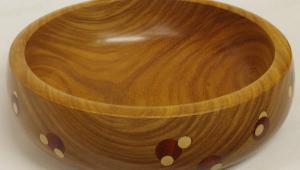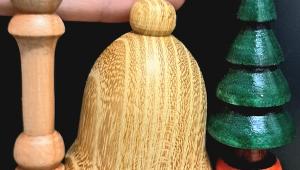Wet vs. dry traditional vs. carbide

This was an exciting experiment for me, not only in terms of tools and materials, but also the way in which the article was produced. As some of you may already know from previous articles – one in particular entitled ‘Needs must’ in the February 2021 issue – as a result of the COVID-19 pandemic, I’ve gone from having a practical business to one that’s now solely online.
During my time demonstrating and teaching at numerous venues and events throughout Europe, I’ve gained valuable experience using various lathes and tools. With this article, my aim was to compare commonly used turning tools – swept-back and traditional-ground bowl gouges and a parting tool – with carbide equivalents, including those from Crown Hand Tools’ Cryogenic range, Jimmy Clewes’ Mega Mate hollowing tool, and the Simon Hope Carbide Pro hollowing tool.
I used all of these tools on both kiln-dried sycamore and wind-blown ash. The results were certainly interesting – in some cases expected, while unexpected in others. In the woodturning sphere, this very topic has been the subject of debate for some time now. As with any hobby and its associated innovations, experimentation is required and decisions made as a result are often determined by personal choice, physical situations/ability, and of course budget.
Using the technology adopted for my online business, the following article is the first of its kind to be produced. In doing so, I used five Canon camcorders, an ATEM Mini Pro, which captures footage and produces stills, along with a LumaFusion editing suite to produce the video highlights and photos shown here. All in all, it’s a very novel and exciting way of bringing this format to print. I hope you enjoy and that it provides with some food for thought.
TRADITIONAL TOOLS
• Crown Cryo M42 gouges • Record Power M2 gouges • Ashley Iles HSS gouges mounted in Simon Hope handles
CUPPED CARBIDE TOOLS
• Mega Mate by Jimmy Clewes • Simon Hope 6mm Carbide Pro hollowing tool • Nr5 Hunter Tool designed by Jimmy Clewes
CARBIDE TOOLS
• Crown Carbide flat cutter tools • Various Easy Wood Tools • Glenn Teagle carbides • Woodpeckers carbides • Others made up myself using cutters purchased from eBay
In my opinion, however, the best performers and by far the most superior carbide tools are those from Crown’s Cryogenic range
MATERIALS USED: Dry sycamore; wet ash LATHE: Powermatic 3520C CHUCK: Record Power SC4 professional geared scroll chuck

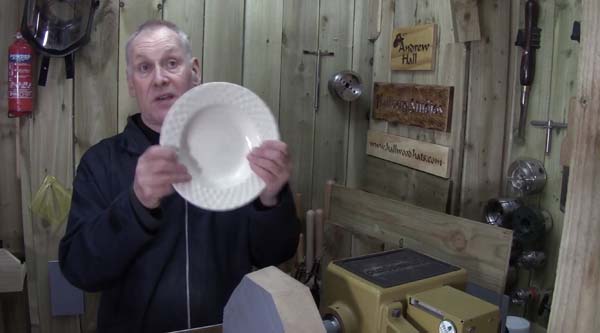
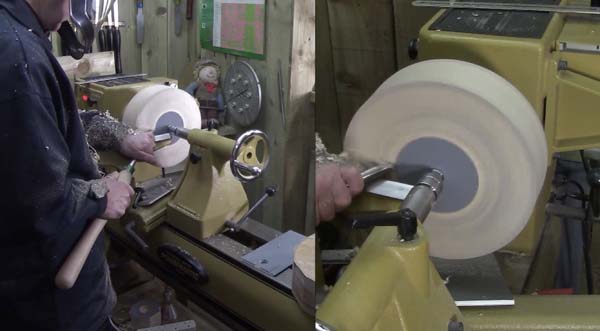

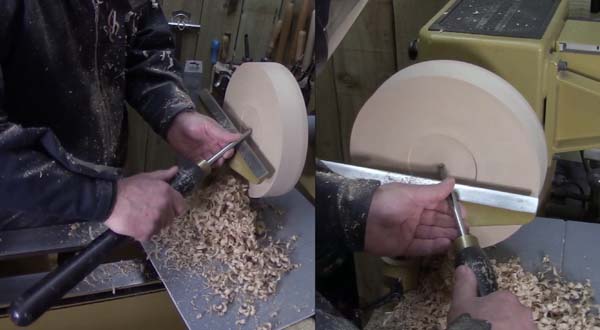

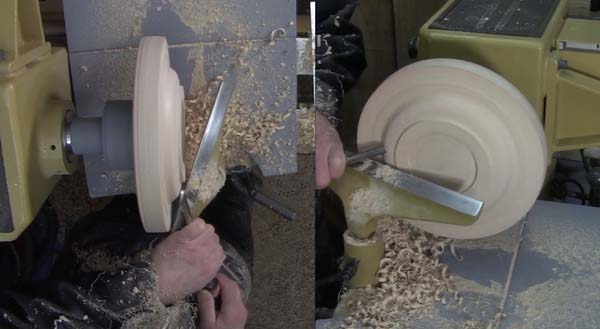
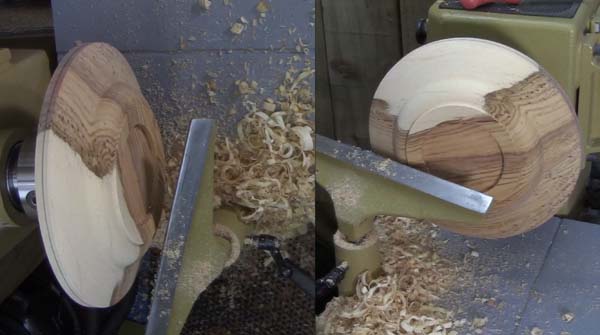
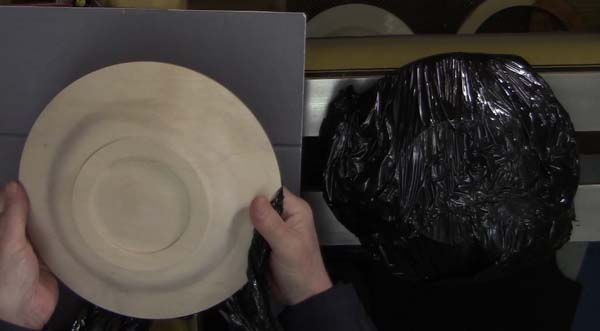
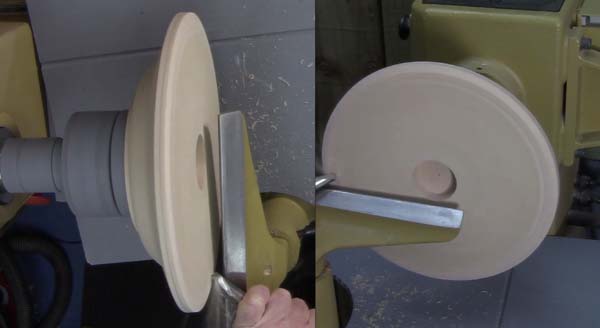
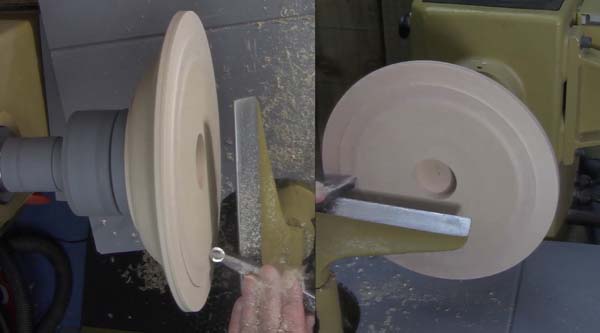
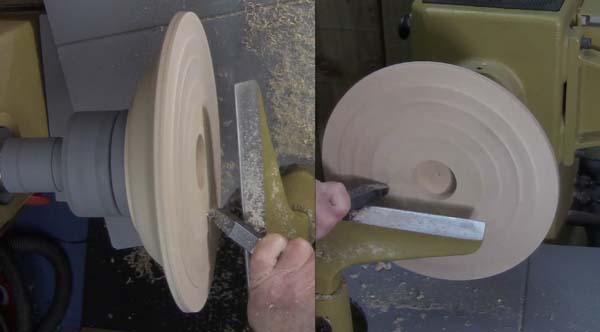
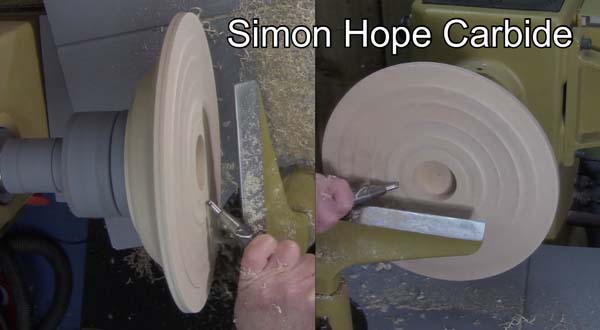

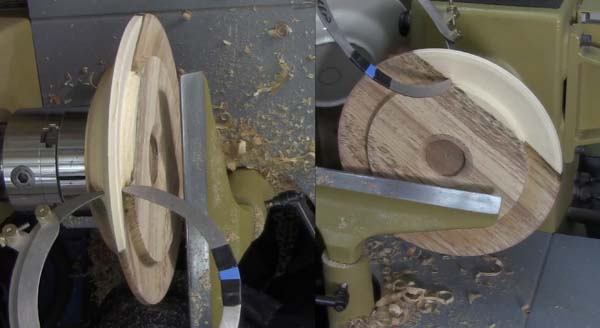
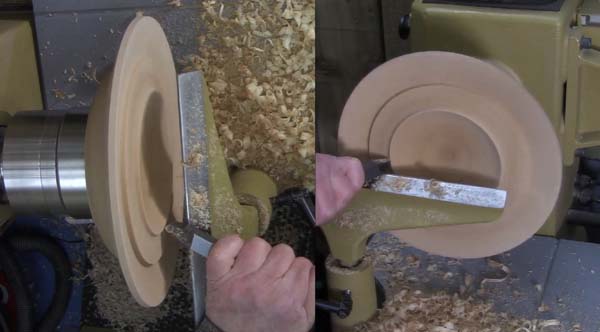


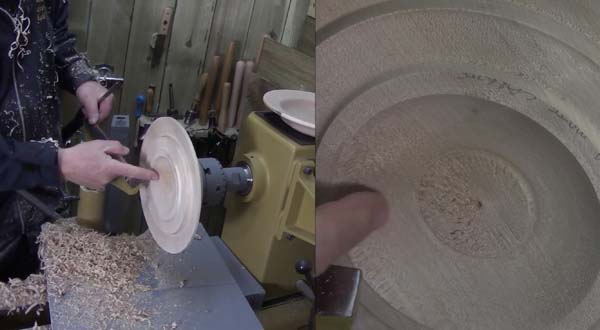
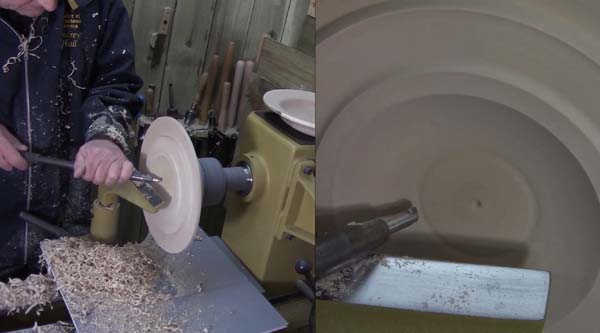

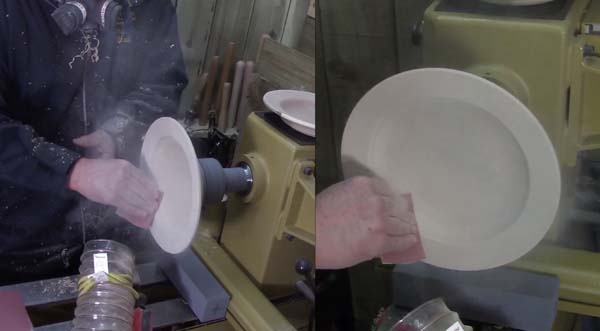


Conclusion
Although this subject has already been widely discussed on platforms such as Meet the Woodturner – see www.patcarrollwoodturning.com and various Zoom forums, my belief is that there is, always has been, and always will be, a place for carbide tools. Such examples are ideal for those turners wanting to carry out some occasional turning, and can therefore avoid the process of learning how to use traditional tools. They’re also great for turners with a range of challenging conditions, such as poor grip, manual dexterity and arthritis. And for those turners not wanting to sharpen tools or buy a grinding system, thanks to their disposable carbide tips, these tools present a great option. Having said that, Crown’s carbide cutters can be easily resharpened using a diamond card.
As I’ve demonstrated here, I believe that carbide tools do have their place, although my personal preference would always be a traditional tool as it produces a far superior finish on a variety of materials. The same result, however, can be achieved with carbide tools, ensuring you begin with a coarse abrasive. Regardless of the tools chosen, however, as long as you use them in a safe manner and have fun doing so, this can only be beneficial in terms of one’s health and wellbeing. I hope you have fun making shavings!
- Log in or register to post comments
